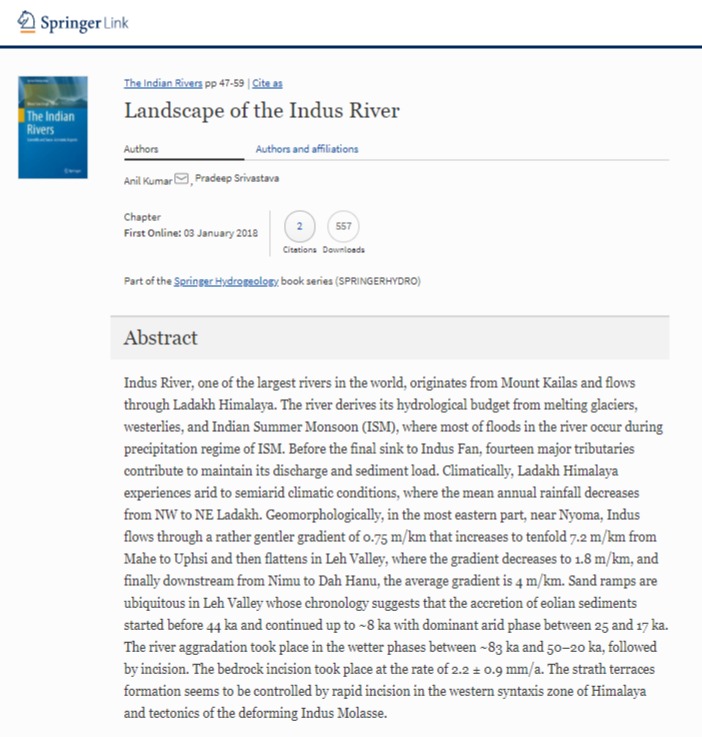
Indus River, one of the largest rivers in the world, originates from Mount Kailas and flows through Ladakh Himalaya. The river derives its hydrological budget from melting glaciers, westerlies, and Indian Summer Monsoon (ISM), where most of floods in the river occur during precipitation regime of ISM. Before the final sink to Indus Fan, fourteen major tributaries contribute to maintain its discharge and sediment load. Climatically, Ladakh Himalaya experiences arid to semiarid climatic conditions, where the mean annual rainfall decreases from NW to NE Ladakh. Geomorphologically, in the most eastern part, near Nyoma, Indus flows through a rather gentler gradient of 0.75 m/km that increases to tenfold 7.2 m/km from Mahe to Uphsi and then flattens in Leh Valley, where the gradient decreases to 1.8 m/km, and finally downstream from Nimu to Dah Hanu, the average gradient is 4 m/km. Sand ramps are ubiquitous in Leh Valley whose chronology suggests that the accretion of eolian sediments started before 44 ka and continued up to ~8 ka with dominant arid phase between 25 and 17 ka. The river aggradation took place in the wetter phases between ~83 ka and 50–20 ka, followed by incision. The bedrock incision took place at the rate of 2.2 ± 0.9 mm/a. The strath terraces formation seems to be controlled by rapid incision in the western syntaxis zone of Himalaya and tectonics of the deforming Indus Molasse.